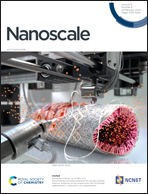Modular protein–DNA hybrid nanostructures as a drug delivery platform†
Abstract
With the increasing number of identified intracellular drug targets, cytosolic drug delivery has gained much attention. Despite advances in synthetic drug carriers, however, construction of homogeneous and biocompatible nanostructures in a controllable manner still remains a challenge in a translational medicine. Herein, we present the modular design and assembly of functional DNA nanostructures through sequence-specific interactions between zinc-finger proteins (ZnFs) and DNA as a cytosolic drug delivery platform. Three kinds of DNA-binding ZnF domains were genetically fused to various proteins with different biological roles, including targeting moiety, molecular probe, and therapeutic cargo. The engineered ZnFs were employed as distinct functional modules, and incorporated into a designed ZnF-binding sequence of a Y-shaped DNA origami (Y-DNA). The resulting functional Y-DNA nanostructures (FYDN) showed self-assembled superstructures with homogeneous morphology, strong resistance to exonuclease activity and multi-modality. We demonstrated the general utility of our approach by showing efficient cytosolic delivery of PTEN tumour suppressor protein to rescue unregulated kinase signaling in cancer cells with negligible nonspecific cytotoxicity.



 Please wait while we load your content...
Please wait while we load your content...